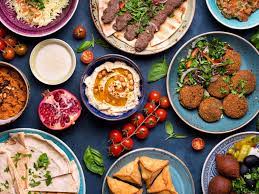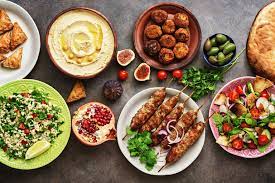A variety of spices make up a significant portion of Middle Eastern cuisine. These dishes typically incorporate flavors like ginger, turmeric, baharat and black pepper as well as cinnamon, nutmeg and paprika.
From breakfast favorites like shakshuka and tagine to dinner party staples like kofta and labneh, these recipes showcase bold, exotic flavours. Many are also incredibly healthy!

Meat
Other protein staples include poultry and fish and dairy. Low-fat yogurt is often eaten in place of sour cream and used as a base for salad dressings. Eggs are also a common dish ingredient.
The cuisine is a crossroads of cultures and civilizations, with influences from North Africa, Asia, and Europe.
Vegetables
Aside from grains, vegetables are essential to Middle Eastern cuisine. Leafy vegetables like cabbage, chard and spinach are popular, along with squash, tomatoes, eggplant and okra. Beans are also widely used, especially lentils and chickpeas.
Fruits and seeds are also commonly consumed in the region. Olives, honey, sesame seeds and dates all crop up regularly. Fresh herbs such as mint and parsley add a vibrant flavor to meals.
Milk, yogurt (plain or flavored), cheese and other dairy products are widely available in the Middle East. In addition to kebabs and stews, they are a staple in the region’s salad dressings, dips and spreads.
Bread
Bread, often referred to as the staff of life, is an essential dietary staple in many cultures around the world.
It is also where the art of fermentation was discovered, which led to leavened bread.
Throughout the region, various types of bread are served, each with its own unique flavor, texture and historical narrative.
Spices
In Middle Eastern cuisine, spices are a major player in creating the flavors of dishes. These warm, nutty and earthy spices are used to enhance the flavors of meats, beans, rice, salads and vegetables.
Cumin is a very distinct spice that is found in many Middle Eastern dishes. This bold spice has a warm, nutty flavor and hints of lemon. It pairs well with root vegetables and lentils.
Sumac is another common spice used in Middle Eastern cooking. This sour-flavored spice comes from the berries of the Sumac plant and is used to season stews and certain dressings.
Other popular Middle Eastern spices include ginger, cinnamon, turmeric and cardamom. They are used to add sweetness and depth of flavor to sweet desserts and drinks needs read more hear.





















